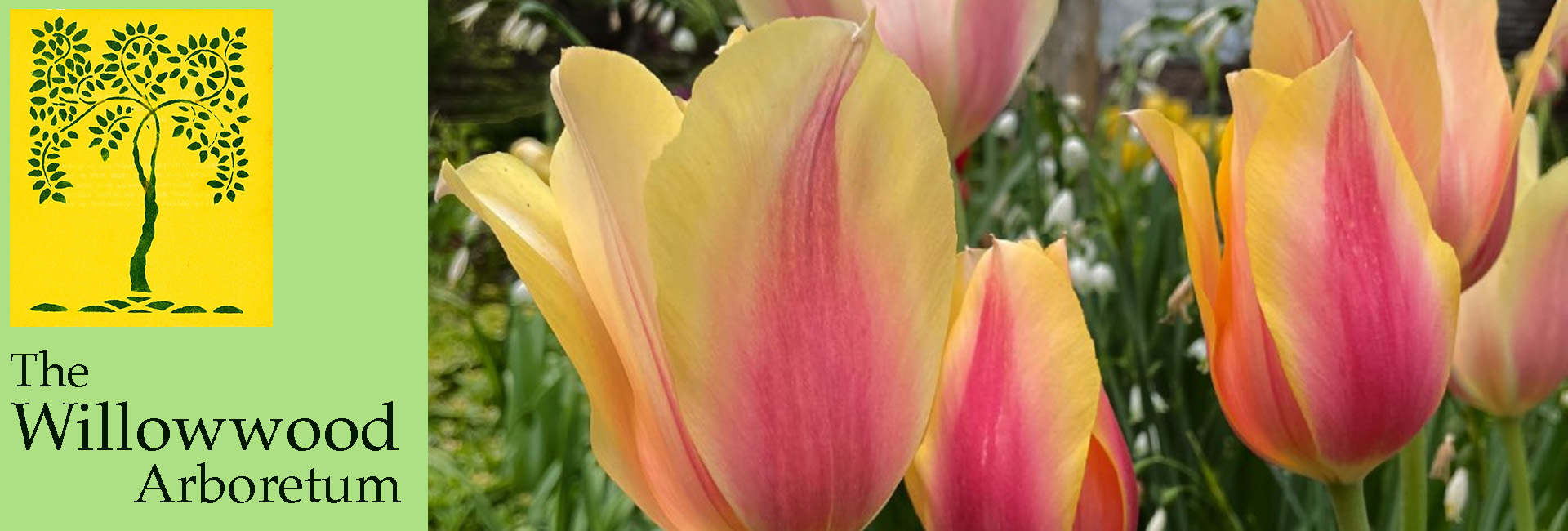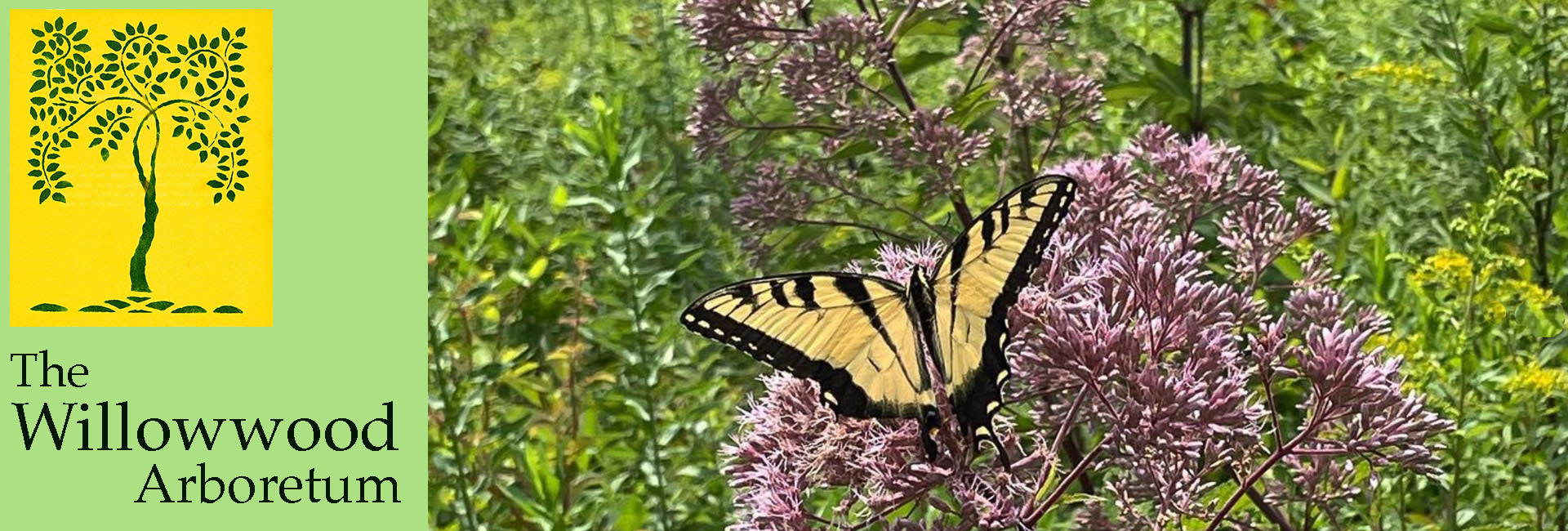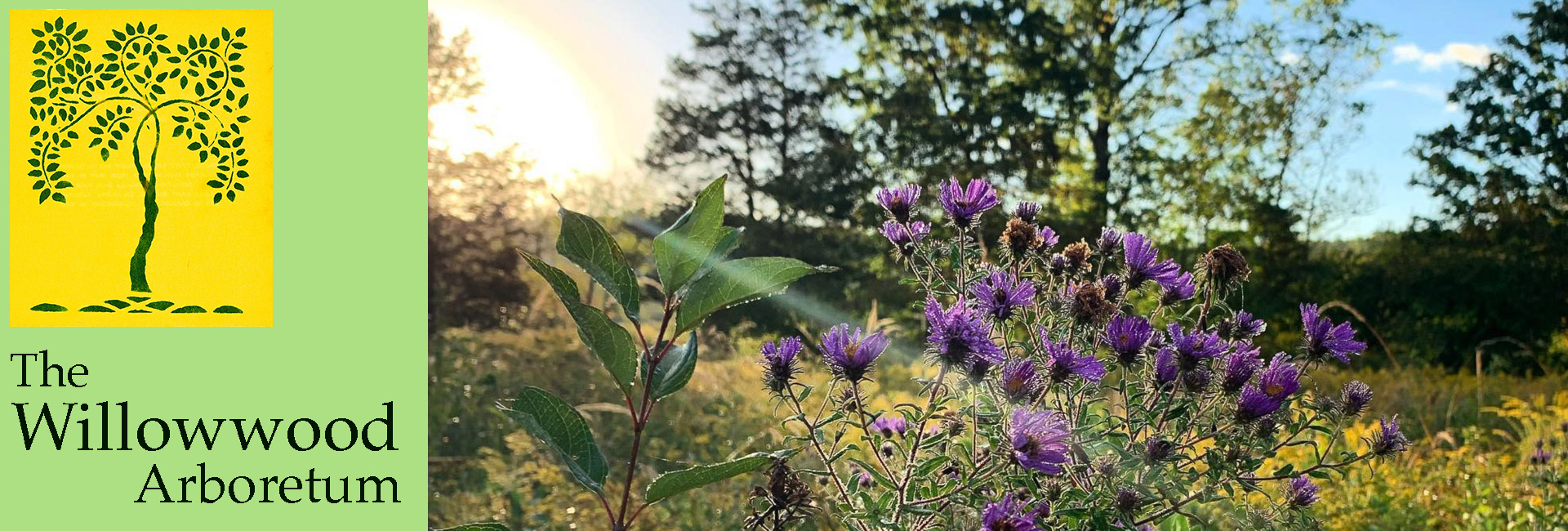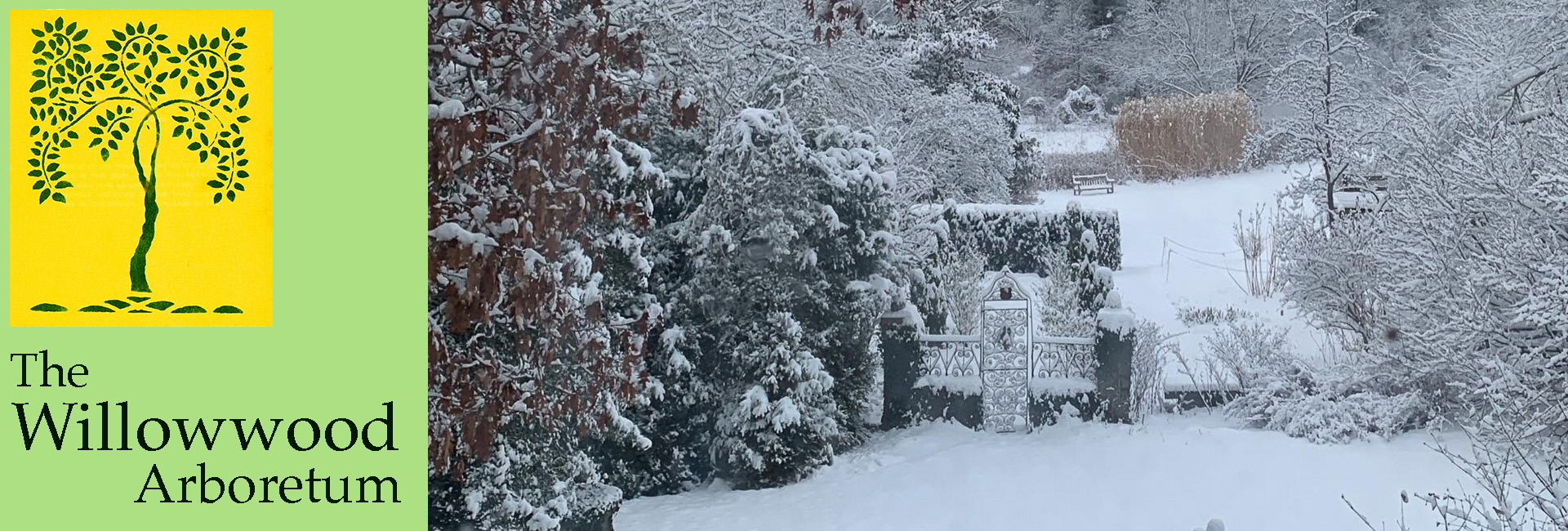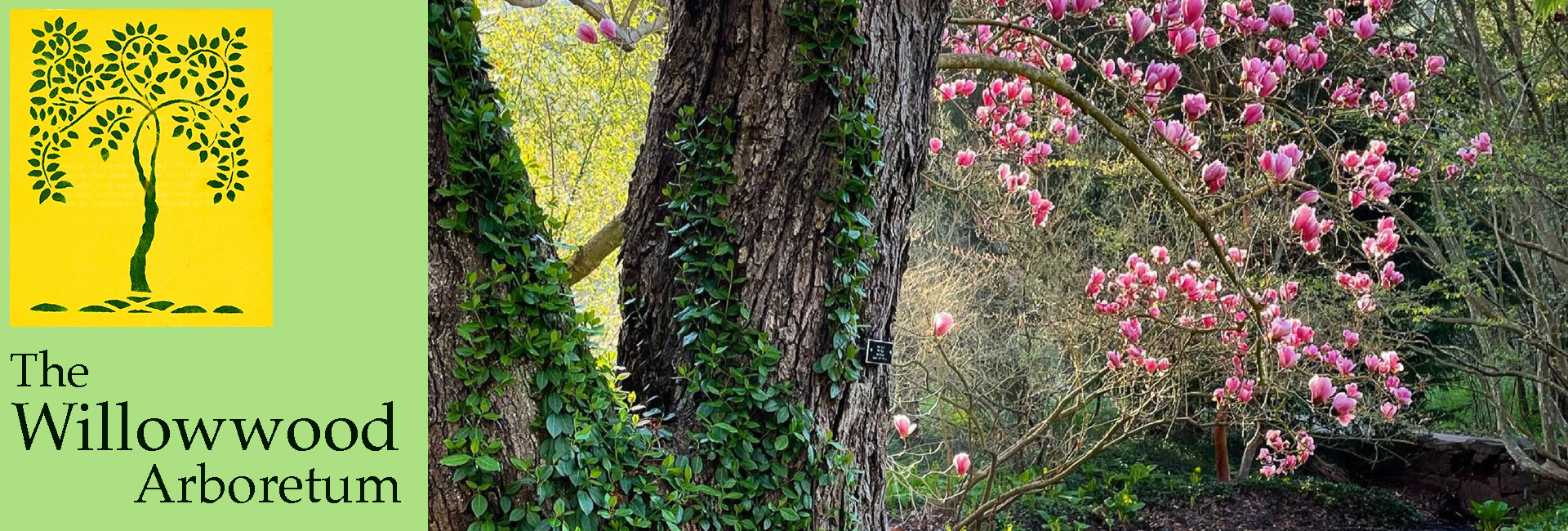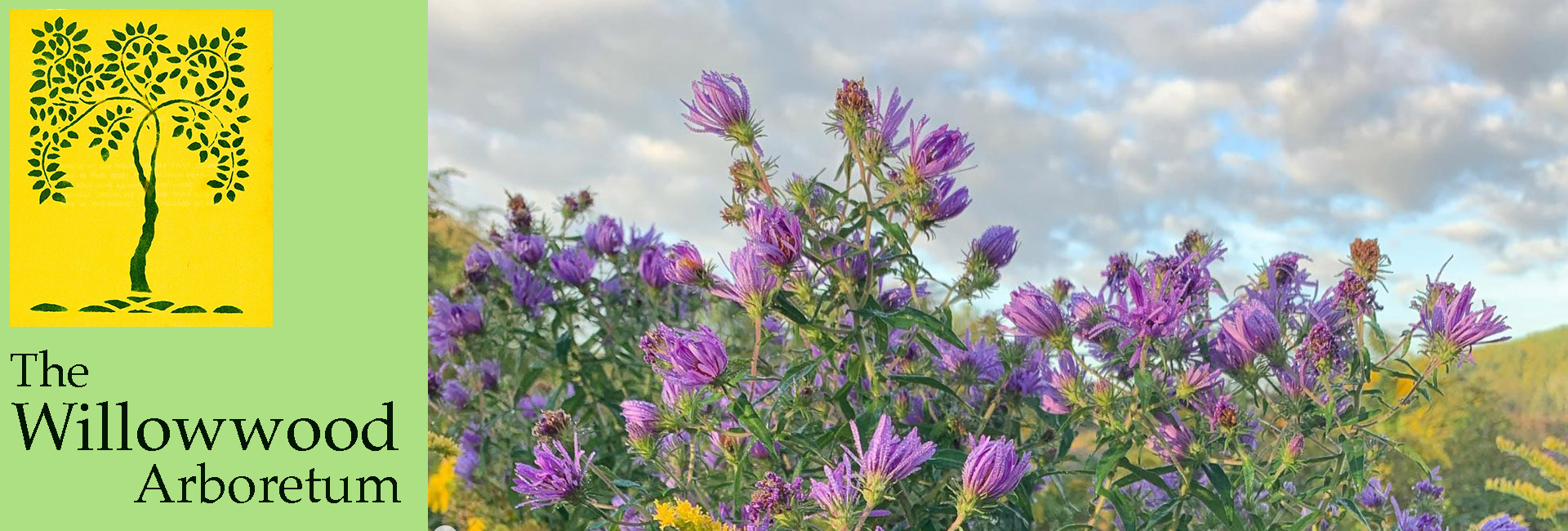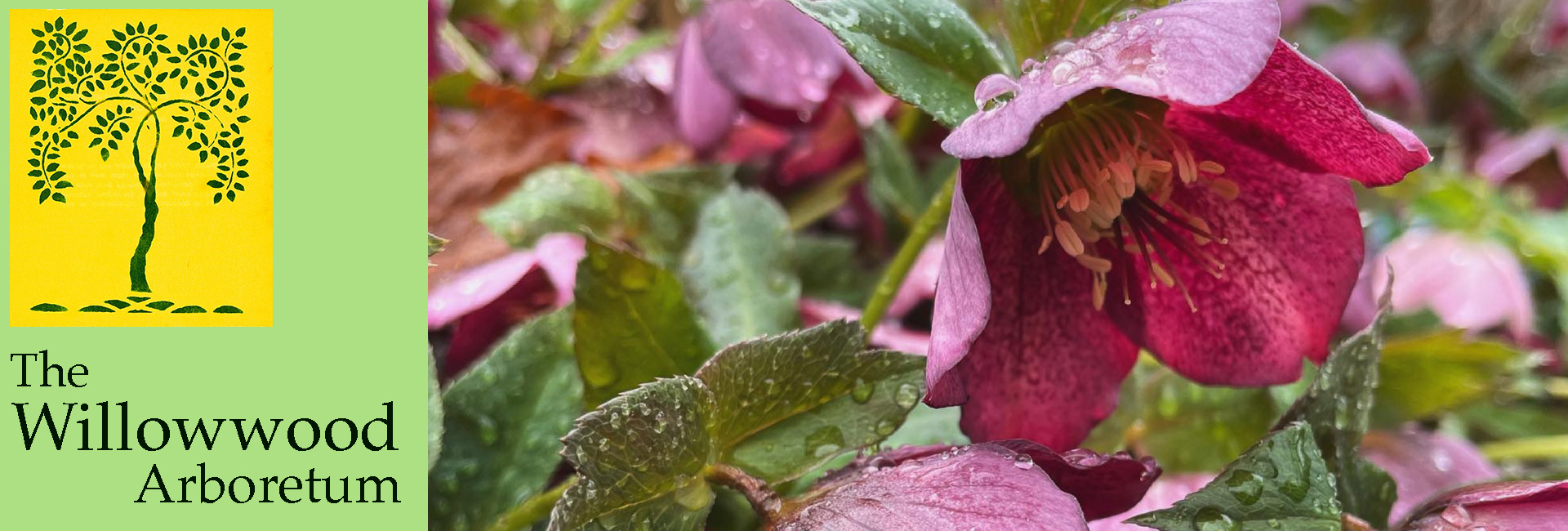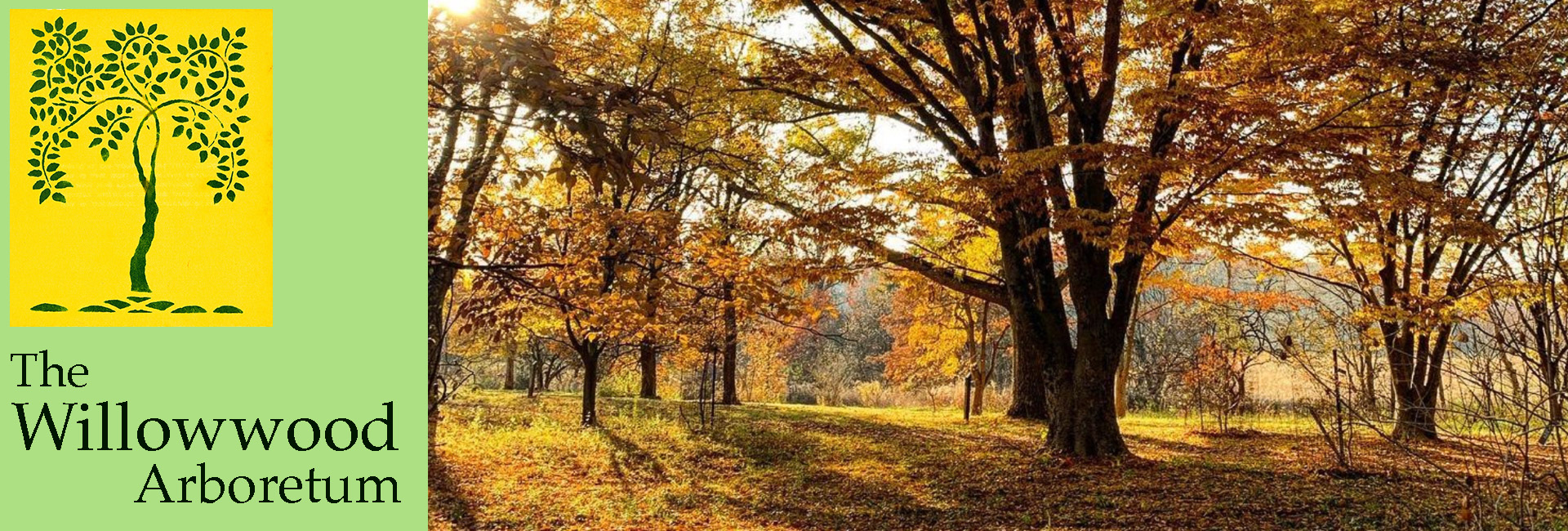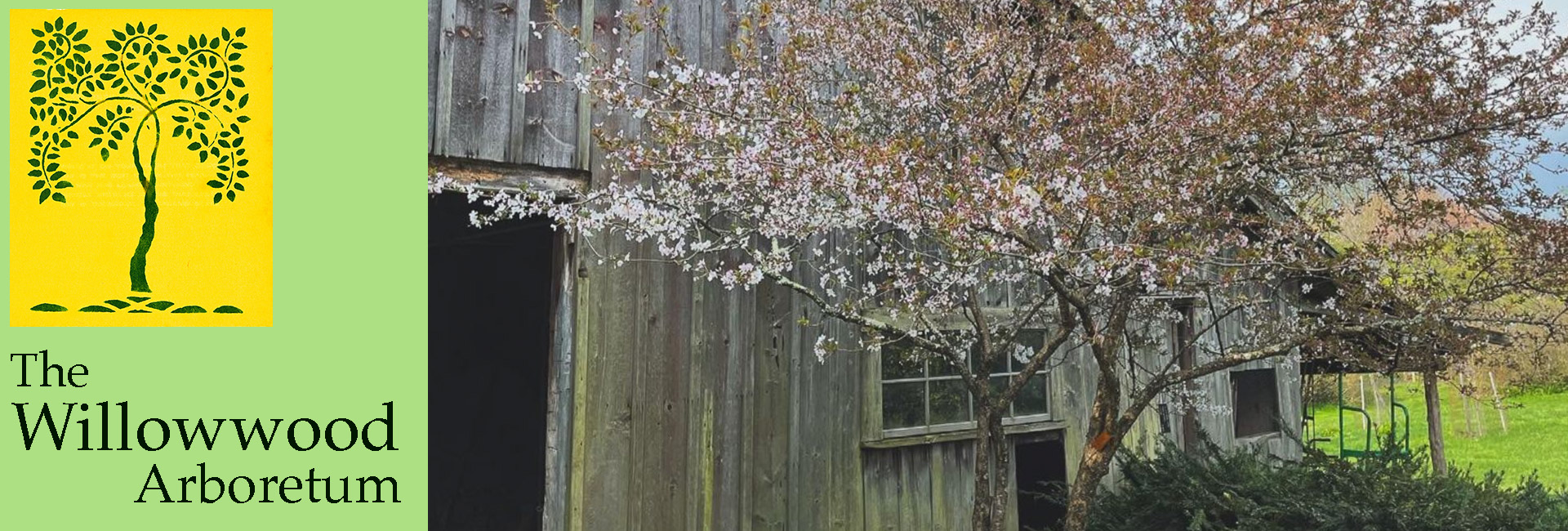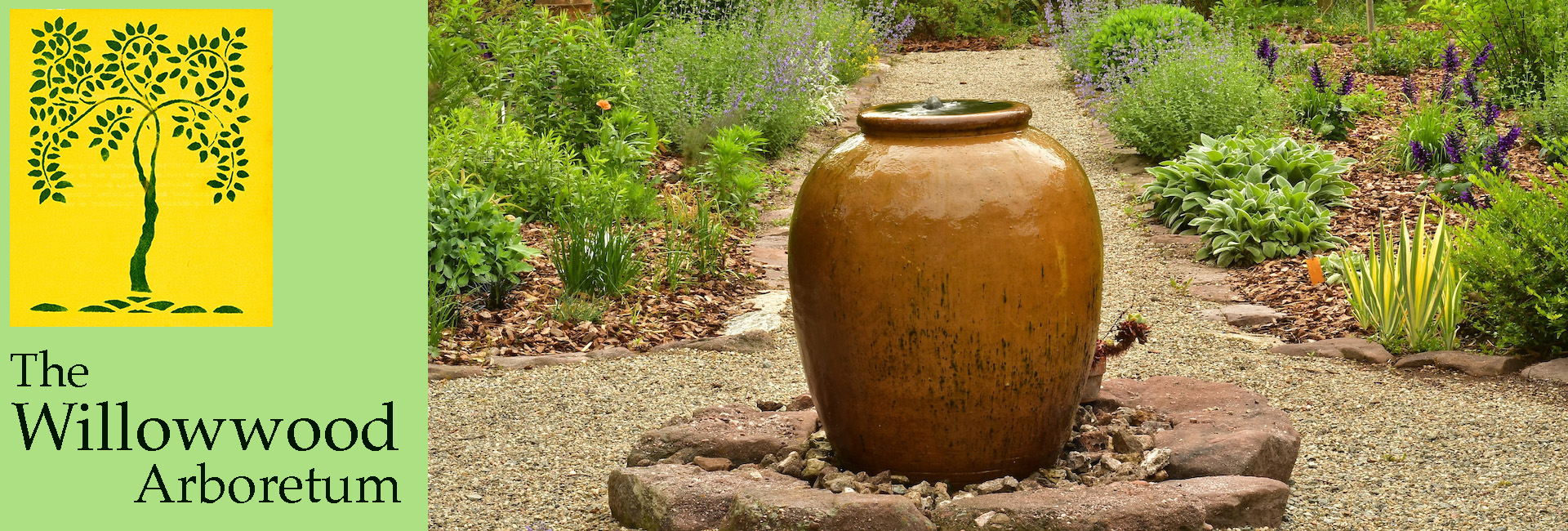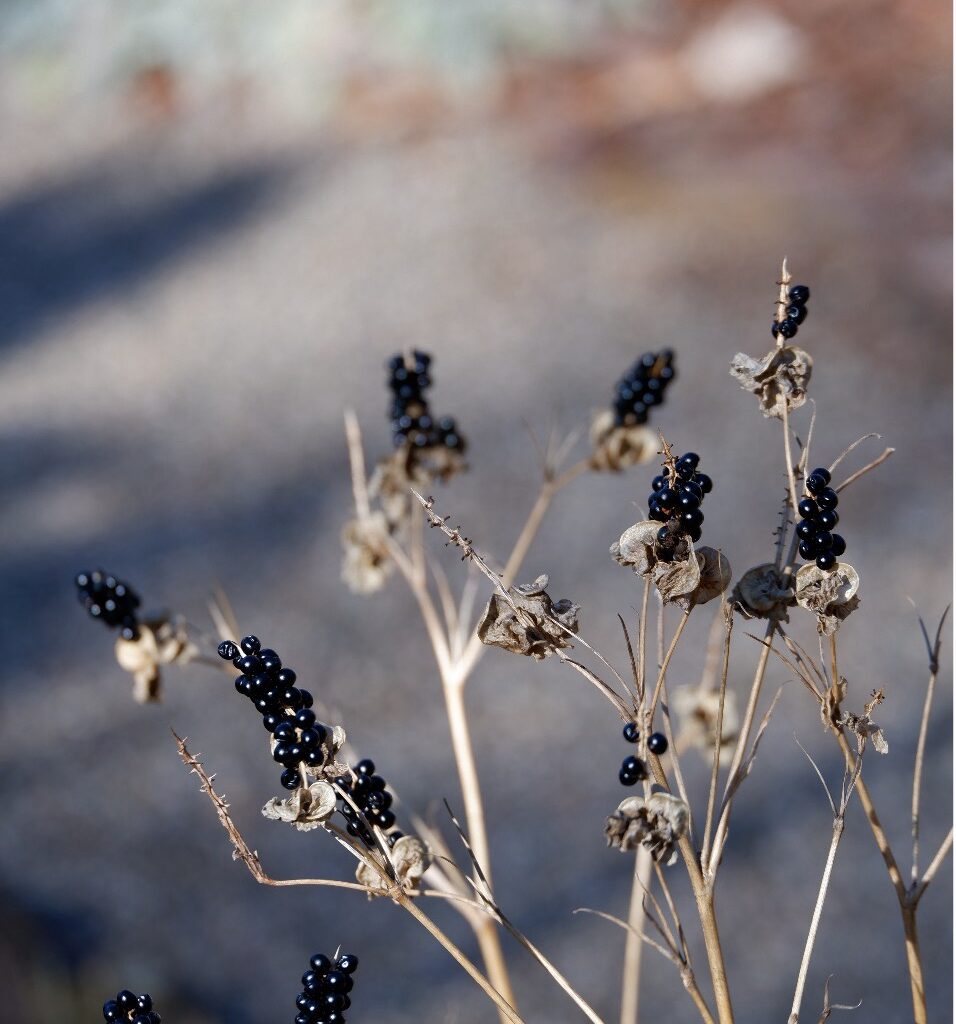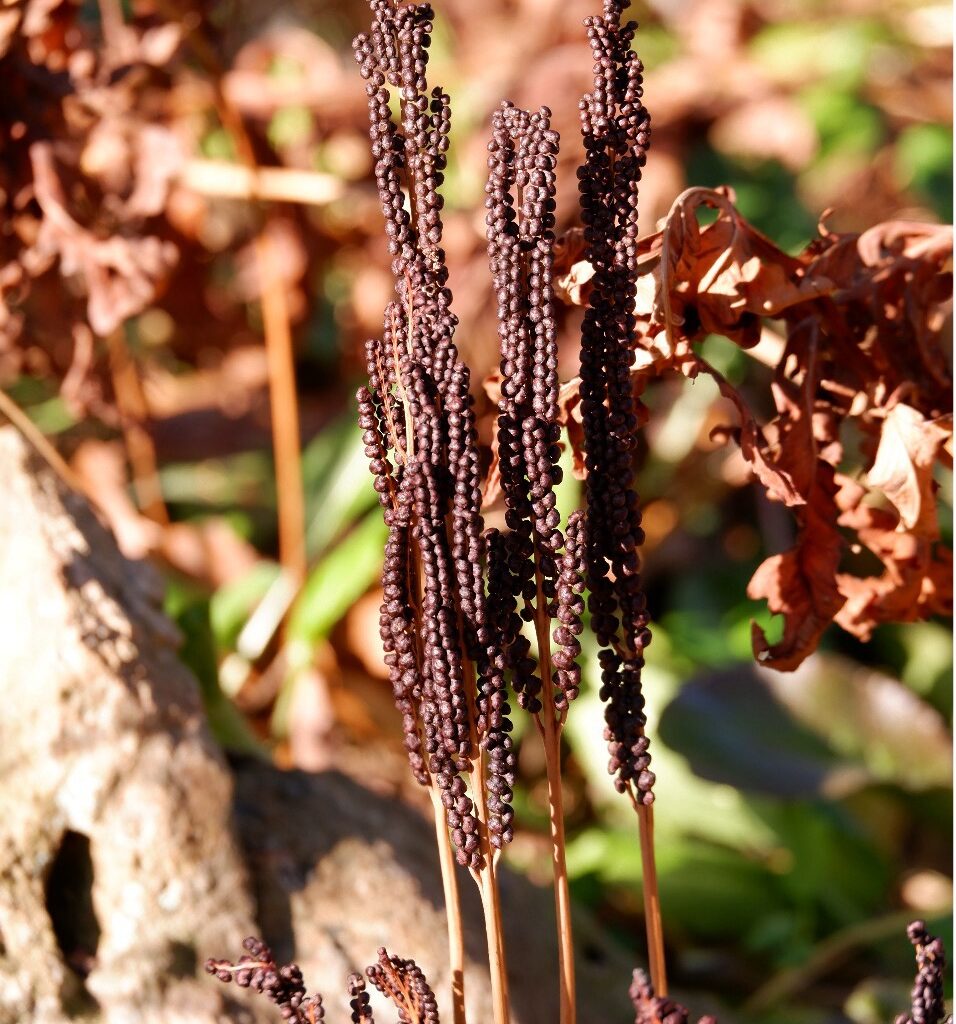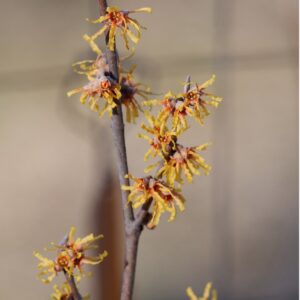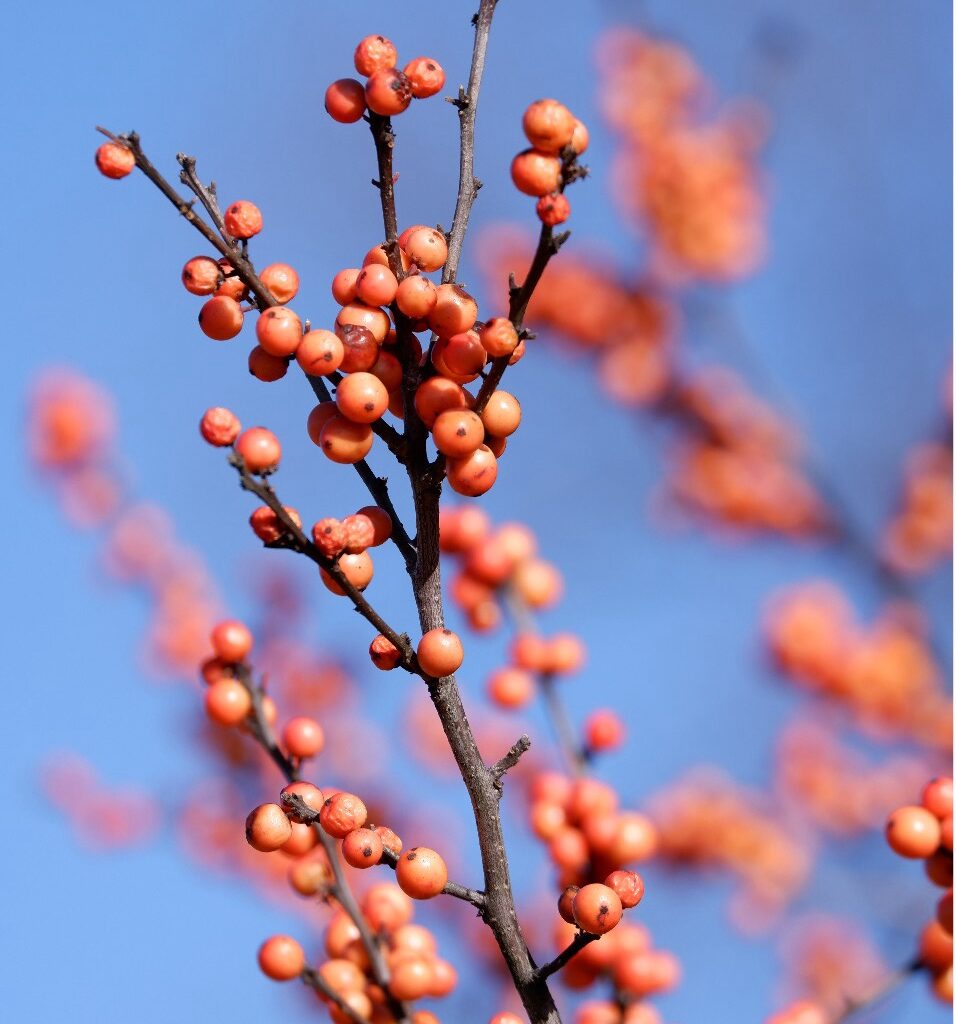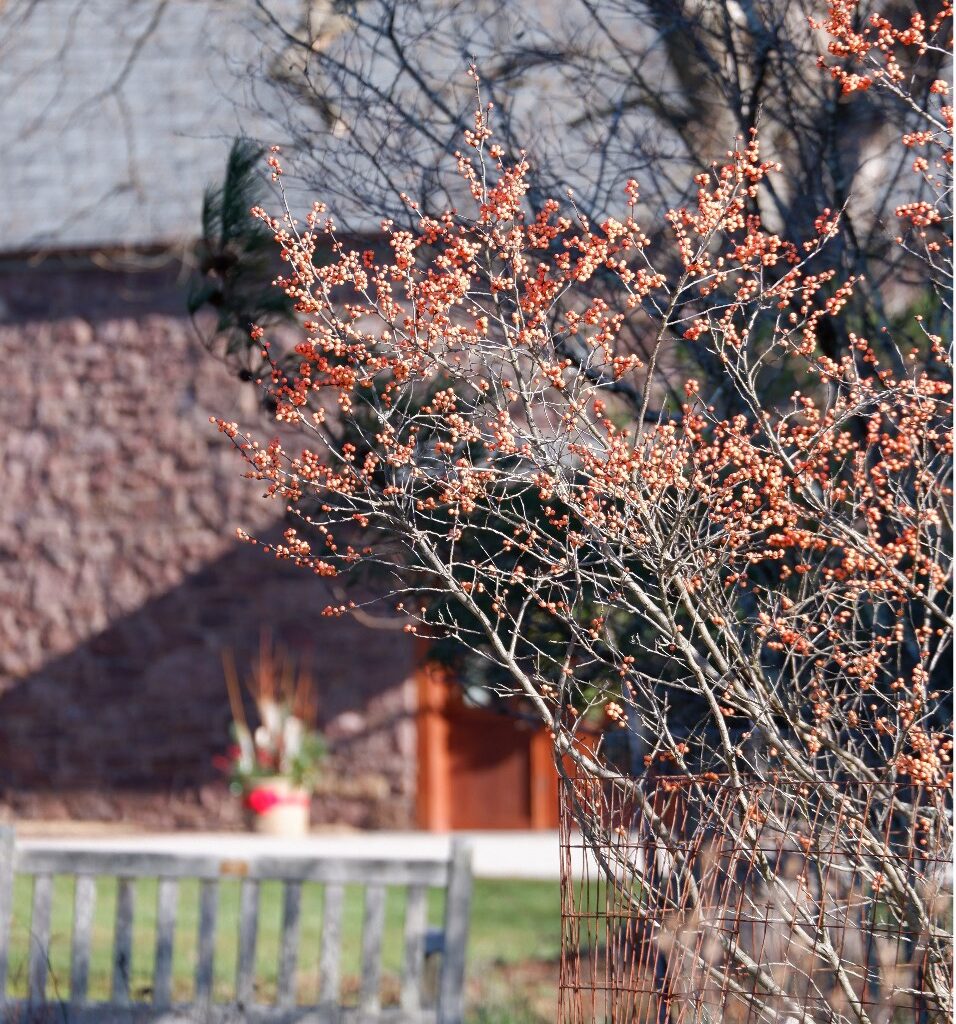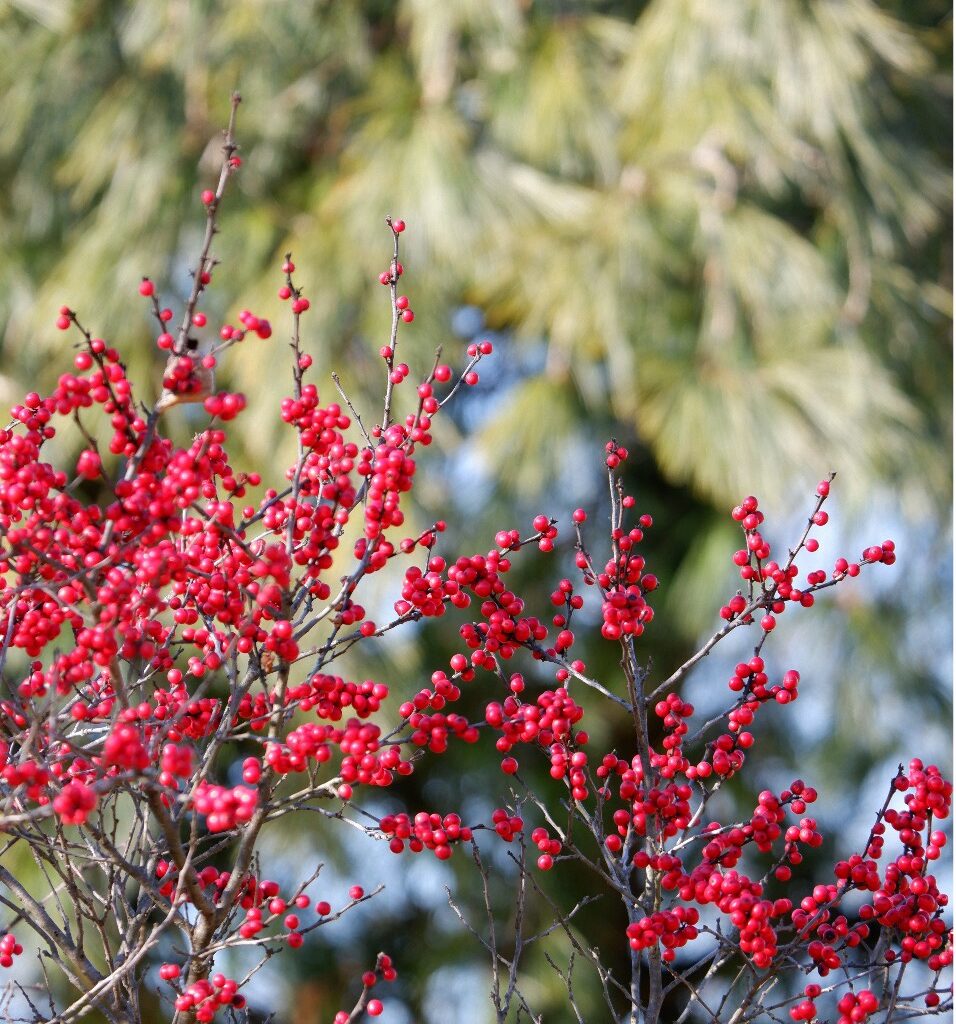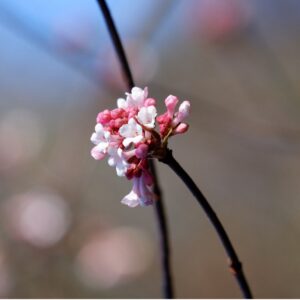And just like that, the world is awash in the verdant green of fresh spring growth and colorful flowers. Spring really came out like a lion this year! As this year’s bulb display fades, we come into mid-spring perennials and trees. Willowwood is known for our Wisteria display, and we take great pride in maintaining our plants to optimize flowering. I’m happy to report that Wisteria Watch is over and we are currently at peak bloom! We have multiple arbors on the property with Wisteria floribunda in all its pendulous purple glory and the more unusual Wisteria sinensis ‘Alba’ in Pan’s Garden.
We’ve also just entered the season of another iconic Willowwood collection: Lilacs! A walk through our extensive collections is wonderful for the senses: so many different scents and textures to enjoy, such as Syringa vulgaris ‘Sensation’, with its white-margined flowers and classic lilac aroma. Don’t forget to stop at the Cottage Garden, which is an explosion of different textures and colors of flowering perennials, including budding roses like the (planted in 1940) Rosa x rehderiana ‘Marie Pavie’.
If you’d prefer more shade, a walk in the woodwalk is always delightful, but even more so with the candy-colored masses of Primula japonica (originally introduced to Willowwood in 1930!) in bloom. This variation in flower color is completely natural and random, so every year’s display is a pleasant surprise. The Woodwalk is home to a plethora of Japanese Maples of all different textures and colors, like the Acer palmatum ‘Koto-No-Ito” with its highly dissected leaves.
While it’s easy to lose time in the core area of the arboretum, many of our collections of more obscure species are worth taking a gander at. The lantern-esque flowers of Enkianthus campanulatus var. sikokianus in the Orchard are an unexpected color for early spring; foreshadowing for their spectacular fall color in the same red-orange. Nearby, the demurer Staphylea pinnata, the European Bladdernut flowers catch early morning light beautifully.
